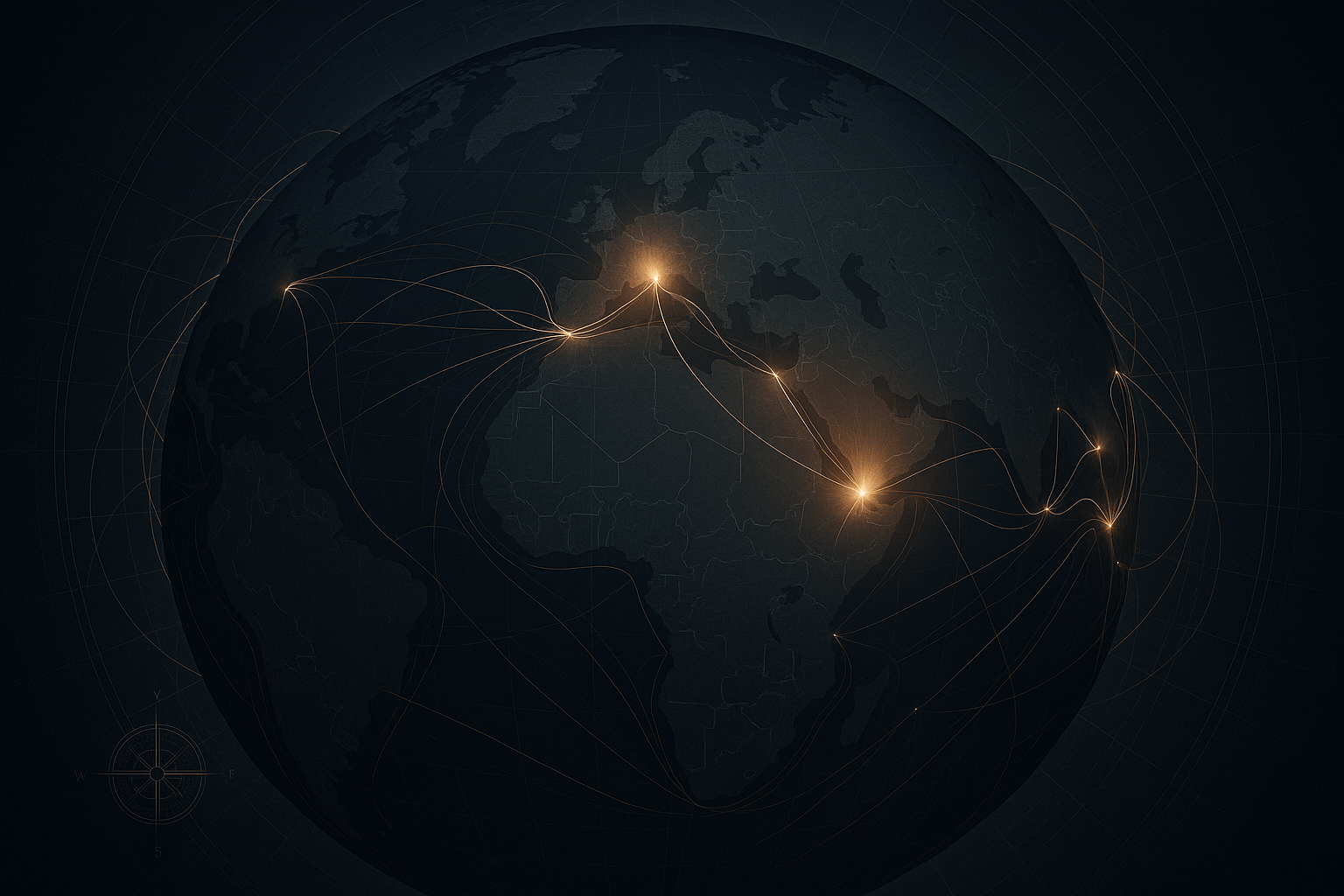Where the Digital Ocean Meets the Land
Every submarine cable must eventually come ashore. They do so at Cable Landing Stations (CLS), typically discreet, highly secure buildings that are the critical nexus between the global underwater network and a country’s terrestrial internet infrastructure. The location of these stations is not random; it’s dictated by a combination of marine geography, political stability, and economic strategy. A handful of cities have emerged as global super-hubs, concentrating an astonishing number of a cables in small geographic areas.
Marseille, France: Europe’s Digital Gateway
Nestled on the French Mediterranean coast, Marseille has become one of the most important digital crossroads on the planet. Its strategic location makes it the primary landing point for cables running from Asia, the Middle East, and Africa up through the Red Sea and Mediterranean. It is Europe’s data gateway to the East. Over 17 major submarine cables, such as the massive Asia-Africa-Europe 1 (AAE-1), surface here. This concentration has created a booming ecosystem of data centers, turning the historic port city into a continental hub for data traffic, but also creating a single, massive point of failure for Europe-Asia connectivity.
Singapore: The Heart of Southeast Asia
For decades, Singapore has leveraged its geography to become a global shipping powerhouse. Today, it has done the same for data. Positioned at the mouth of the Strait of Malacca, the world’s busiest shipping lane, Singapore is the undisputed connectivity hub for Southeast Asia. Its political stability and business-friendly policies have attracted more than 25 submarine cable systems to its shores. All data flowing between the Indian and Pacific Oceans almost inevitably passes through or near Singapore, making its landing stations some of the most critical—and valuable—digital real estate in the world.
Fujairah, UAE: The Middle East’s Safe Harbor
While many cables connect through the Persian Gulf, the narrow and geopolitically tense Strait of Hormuz presents a significant risk. Enter Fujairah. Located on the Gulf of Oman, just outside the strait, this emirate has established itself as a safer, more stable alternative for connecting the Middle East to the global internet. Cables like the FALCON system, which forms a ring around the Arabian Peninsula, land in Fujairah, making it a vital node for the region’s digital traffic and a key link in the Europe-to-India data superhighway.
The Straits of Digital Peril
Even before cables reach their landing stations, they must navigate shallow, narrow waterways where they are most vulnerable. Unlike in the deep ocean where cables are protected by depth, in these straits they lie in relatively shallow water, often amidst heavy shipping traffic, fishing activity, and seismic fault lines. This makes them susceptible to accidental damage from ship anchors and deliberate sabotage.
The Red Sea and the Bab-el-Mandeb Strait
There is no more potent example of a choke point’s vulnerability than the Red Sea. This narrow body of water is the geographic bottleneck for nearly all data traffic between Europe and Asia. Cables must first pass through the 20-mile-wide Bab-el-Mandeb Strait (“Gate of Tears”) before running the length of the sea towards the Suez Canal. In early 2024, this theoretical vulnerability became a reality when several cables in the Red Sea were severed, allegedly by Houthi rebel activity in Yemen. The incident instantly impacted internet services across multiple continents and sent a shockwave through the industry, highlighting the extreme risk of routing so much of the world’s data through a single, volatile corridor.
The Strait of Malacca
Stretching between the Malay Peninsula and the Indonesian island of Sumatra, the Strait of Malacca is a hub for more than just shipping. The seabed of this narrow, 550-mile-long strait is crisscrossed by a dense web of submarine cables connecting Singapore to the rest of the world. The constant threat of a dropped anchor from one of the 100,000 vessels that pass through annually makes this one of the highest-risk areas for accidental cable damage globally. A significant disruption here could digitally isolate much of Southeast Asia.
The Luzon Strait
Connecting the South China Sea with the Philippine Sea, the Luzon Strait is a critical pathway for data traffic between Hong Kong, Taiwan, China, Japan, and the United States. This region is not only a hotbed of geopolitical tension but is also part of the Pacific “Ring of Fire”, making it highly prone to powerful earthquakes and undersea landslides. A single seismic event could sever multiple cables simultaneously, with devastating consequences for trans-Pacific communication and financial markets.
The Geopolitics of a Tangled Web
These choke points are more than just technical vulnerabilities; they are centers of immense geopolitical power. The countries that host these landing stations or control access to these straits gain significant strategic leverage. They can attract massive investment in data centers, giving their economies a digital edge. More ominously, they possess the theoretical ability to monitor, disrupt, or sever communications.
This reality has spurred a new global competition: the race for redundancy. Nations and tech giants are now investing billions in new, diversified routes to bypass traditional choke points. Proposed projects include trans-Arctic cables that avoid the Suez route altogether, and terrestrial fiber lines that cross continents as a “land bridge” for data. The goal is to build a more resilient internet, one less dependent on a few fragile points on the map.
The next time you stream a movie or join a video call, remember the incredible physical journey that data takes. It’s a journey not through a cloud, but through a tangible network of glass fibers resting on the seabed, funneling through perilous straits and surfacing in a handful of critical coastal cities. The “cloud” is very much grounded in the physical and political geography of our world, and its future depends on navigating these very real choke points.
